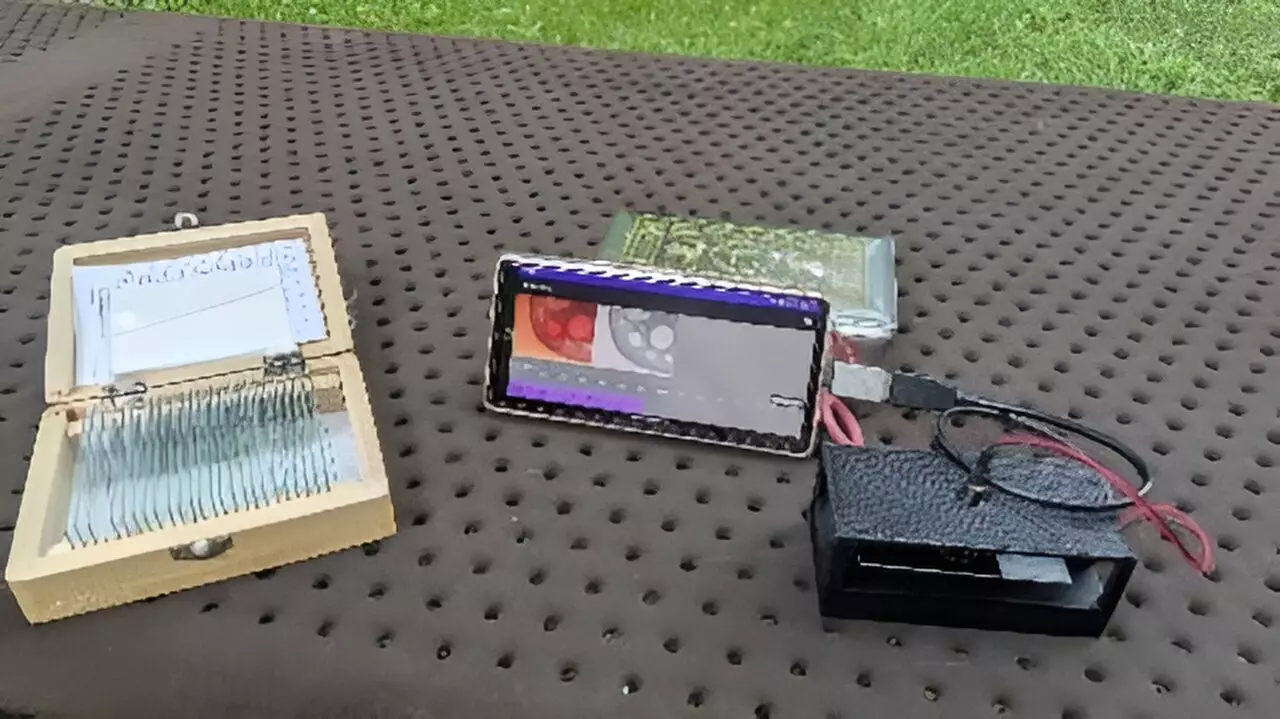In a world driven by relentless technological advancement, the advent of a portable smartphone-based digital holographic microscope is a significant breakthrough that stands to democratize access to advanced 3D measurement capabilities. Traditionally, digital holographic microscopes have been burdened by their dependence on elaborate optical systems and cumbersome computational devices, often making them unsuitable for field applications or general accessibility. The transformative work led by Yuki Nagahama and his research team at the Tokyo University of Agriculture and Technology is paving the way for an era where sophisticated imaging technology can be utilized in diverse settings, from classrooms to remote medical facilities.
This innovation transcends traditional microscopy by combining the capabilities of holography and smartphones. Digital holography, which reconstructs holograms to provide rich 3D data about samples, has historically been anchored to bulky setups. Nagahama’s team has cleverly leveraged the capabilities of 3D printing and smartphone processing power to craft a solution that is not only economical but also lightweight and portable.
How it Works: The Science Behind the Innovation
The operational efficiency of this new digital holographic microscope stems from its inherent design simplicity. By capturing interference patterns between a reference beam and light that has interacted with a sample, this microscope can reconstruct holograms in real time. The methodological brilliance lies in the band-limited double-step Fresnel diffraction technique, which allows the system to perform rapid calculations without taxing the smartphone’s limited computational resources.
Unlike previous smartphone-based holography attempts that struggled with real-time processing or required separate devices for calculation, this new model shows great promise. It demonstrates real-time hologram reconstruction at a remarkable frame rate, allowing users to visualize subtle details of a sample quickly. The capacity for rapid, accurate 3D imaging holds immense potential, whether for medical diagnostics in under-resourced areas or educational purposes that broaden students’ understanding of biological structures.
Applications That Matter: Educational and Medical Transformations
The implications of this smartphone holographic microscope extend far beyond laboratory walls. One of its most promising applications is in the domain of healthcare, particularly in diagnosing diseases in resource-limited settings. Nagahama mentions how it could assist in diagnosing conditions like sickle cell disease in developing countries, where traditional laboratory access may be limited. This could mean the difference between timely intervention and a missed opportunity for care.
From an educational standpoint, the microscope introduces a novel, hands-on approach for students to engage with the microscopic world. Imagine the scenario where biology students can visualize and manipulate 3D representations of living organisms, whether in their classrooms or from the comfort of their homes. This could foster a deeper understanding of biological processes and a stronger interest in the sciences.
Quality Control Through Innovation: Overcoming Technical Limitations
While the system is groundbreaking, it’s important to acknowledge the challenges it faces. Digital holographic microscopes are known for generating unintended, ghost-like images during the reconstruction process, which can hinder sample analysis. The research team’s commitment to refining image quality via deep learning techniques shows foresight; harnessing the power of artificial intelligence could significantly improve image clarity and fidelity. This doesn’t merely improve aesthetics but enhances the practical applications of the technology across various fields.
The transition to utilizing deep learning algorithms not only addresses current drawbacks but sets the stage for future innovations in the microscopy landscape. By employing machine learning, researchers have the potential to continue elevating the accuracy and applicability of this lightweight microscope, making it an increasingly essential tool for scientists and educators worldwide.
A Bright Future for Portable Technology
In its essence, this smartphone-based digital holographic microscope challenges the status quo of microscopy. It exemplifies how thoughtful engineering and creative thinking can merge to produce accessible technology, closing gaps in educational and medical resources. As researchers continue to refine this technology and explore its full potential, we may see a significant shift in how we engage with and utilize advanced imaging techniques.
This convergence of portability, affordability, and functionality heralds a future where sophisticated microscopy is not just an asset for the elite scientific community but a tool available to all. Whether in addressing pressing health care challenges or inspiring young minds in classrooms, this breakthrough does not merely reflect a new piece of technology; it represents a foundation for an inclusive and informed future.


Leave a Reply